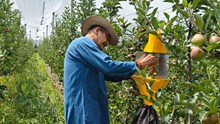
In Assam, farmers have always been close to nature, raising different kinds of animals alongside their crops. Among these, the indigenous geese of Assam, locally called Ranjhanh, are a true gift of nature that many farmers have overlooked. These geese are perfectly suited for Assam’s climate and landscape, especially the flood-prone and wetland regions. Farmers in the state can easily rear these birds as part of their animal husbandry practices and improve their household income without needing to spend heavily.
A Boon for Animal Husbandry in Assam
Unlike other poultry that demand special feed and constant care, the indigenous geese are strong and independent. They graze on natural grasses and plants found in the fields, making them almost cost-free to feed. In fact, these geese act as natural weeders, helping farmers keep their fields clean while they feed. Many farmers report that geese also act as excellent guards, as they chase away snakes and intruders, adding a layer of safety to their farmsteads.
What Makes Indigenous Geese Special?
The indigenous geese of Assam are known for their beautiful appearance and strength. About sixty percent of these birds are cinnamon-brown in colour, while forty percent are pure white. Their legs and feet are mostly orange or yellow, perfect for foraging in wet conditions. The geese can grow to a weight of 3.8 to 4 kilograms within a year, making them a good source of meat. Their meat is highly valued in local markets as it is rich in protein and iron.
These geese also lay large eggs, with each egg weighing around 115 grams. A single goose can produce about twenty eggs in a year. The demand for these eggs is high, especially during festivals and ceremonies, as they are considered a delicacy. Farmers can earn well by selling both the meat and the eggs locally.
Simple Rearing Practices for Assam’s Farmers
One of the main reasons why geese farming fits well with small and marginal farmers is that it does not require expensive infrastructure. A simple shed made of bamboo or wood with a thatched roof is enough to house them at night. The geese need very little space, as they prefer to roam and graze during the day. A dry, raised floor keeps them safe from foot rot and other diseases. Providing shade during the hot summer months is important because geese are not comfortable in extreme heat.
Feeding these birds is perhaps the easiest part of rearing them. During the day, the geese graze on grass and aquatic plants found in or near the farmer’s field. In the evening, farmers can give them small amounts of rice bran, broken rice, or even kitchen scraps such as vegetable peels and leftover grains. Compared to ducks or chickens, geese consume nearly fifty percent less concentrate feed, which further reduces the cost of rearing them.
Breeding these geese is also simple. The birds start laying eggs at around ten months of age. In Assam, the breeding season generally occurs between September and November, and again between December and February. Each female lays about nine or ten eggs in a cycle, and the natural hatchability is high at around eighty percent. The female geese are excellent mothers and take good care of their goslings. Farmers are advised to keep one male for every four or five females to ensure good fertility.
Income and Market Potential for Farmers
The economic benefits of geese farming are impressive when we consider the low input costs. A fully grown goose weighing about four kilograms sells for anything between eight hundred and twelve hundred rupees in the local market. During festivals such as Bihu or Eid, the prices go even higher because of increased demand. Similarly, the large eggs fetch a good price of thirty to fifty rupees each, as they are seen as a special food item.
The droppings of geese are another bonus, as they serve as excellent organic manure that farmers can use in their fields or kitchen gardens. With low mortality rates and high disease resistance, these geese help ensure a reliable source of income. In fact, even a farmer with just ten geese can make around thirty thousand to forty thousand rupees in a year with very little effort.
Challenges and How to Overcome Them
Like any farming practice, geese rearing does come with small challenges. Sometimes, geese may stop laying eggs because of broodiness. In such cases, removing eggs daily can help encourage more egg production. Predators like dogs or foxes can pose a threat, so it is important to secure the geese at night. Seasonal diseases can also be managed by simple steps like vaccinating the birds before the monsoon season and deworming every three months.
Indigenous geese farming in Assam offers a low-investment, sustainable income source for rural farmers. Thriving in local conditions with minimal care, geese provide meat, eggs, and manure. Farmers can start small, seek support from Krishi Vigyan Kendras, and sell locally or online, paving the way for self-reliance and rural prosperity.
















